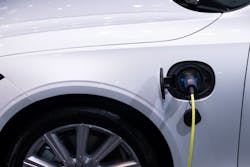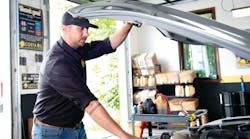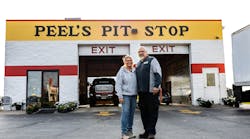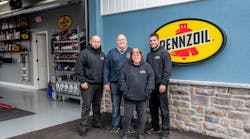In the first half of 2022, a total of 4.3 million new battery electric vehicles (BEV) and plug-in hybrid electric vehicles were delivered worldwide. The number of EVs purchased by American consumers is on the rise even ahead of the push from Washington to transition Americans to electric vehicles. In the U.S. and Canada, EV sales increased by 61 percent, according to a report by EV consultancy group EV-volumes.com. In the same timeframe, sales of combustion engine vehicles decreased by 9 percent year-over-year.
Evaluating the Market – Change is Coming
By fall of 2022 U.S. consumers had 32 EV models to choose from, a number projected to see a fourfold increase in the next two years. While Tesla's website and other company information states, "Your Tesla vehicle does not require annual maintenance or regular fluid changes," the advice is followed up with the stipulation: "Check your owner's manual for latest maintenance recommendations for your vehicle."
Such sage counsel to consumers may be an overstatement.
"If you look at some of the materials they have produced from the company, Tesla says there is no maintenance required," says Craig Van Batenberg, owner of the EV educational company Automotive Career Development Center. "It's a big lie."
While there are few fluids required by EVs, and certainly no need for oil changes, there are still many regular maintenance tasks that quick lube shops can offer to "future-proof" the business. Many of these tasks are the same for traditional vehicles, such as filter replacement, suspension checks, and tire rotation. The tasks may be the same, but it is a good idea for the staff to receive the proper training to address the needs of EV vehicles and their owners.
Training Your Team
Though some of the services are the same, EVs should be handled differently, which requires specific training.
Safety is, of course, paramount to any training program. The Automotive Career Development Center (ACDC) run by Van Batenberg starts with an evaluation to gauge interest and skill level, then moves on to safety.
"Seeing as we have no licensing or regulation in the U.S., my major concern is safety training. We get that done first," Van Batenberg tells NOLN.
The training center, which offers in-person and online classes, awards safety certificates to technicians who complete the training.
Before any quick lube shop sends a technician off to learn how to service EVs, it is important to make sure that employee has an interest. There is a certain allegiance to the gas-powered automobile, and those who are resistant to broaden their skills to include EVs may drag their feet during training.
Those employees who are more motivated can lead the charge to servicing EVs in the shop. It is also advised to set up training during shop hours, even if it means the employee is not available during service hours.
"I coach the owners to pay them for this," says Van Batenberg, referring to the time a tech spends on classes whether they are virtual or in-person. "If they like it, they can spend more time at home learning."
Investing in the Future of Automotive
As more EVs hit the road, the need for skilled shops will quickly emerge. Investment includes training as well as equipment. Initial investment starts at about $500 to $1,000 to get equipment, plus the requisite training. While some of the tools may be the same as those the shop already has, a pair of high voltage gloves is just one of the necessary additions a shop can expect to invest in.
The timeline to get up and running is also somewhat fast.
"If it's a small business, they can get this done in six months, they get things done faster," explains Van Batenberg. "Because there's not a huge expense on their part, they'll probably get their money back within a year."
Getting the Message Out
Training is essential for technicians, but also crucial for employees at the front who work with the customer.
"The service adviser has to be fully trained in the language," Van Batenberg says. "The customer-facing is the most important, get all that done before you advertise."
The race is to get a program in place before the EV customer realizes there is a need. Then start a marketing campaign whether that is signage, advertising, updating the shop's website or contacting customers directly.
One of the best ways to advertise service to the EV market may be simply to install a charging station out front.
"To attract the business, you need to have a charging station out front," states Van Batenberg.
A finishing touch that offers a positive experience is charging the car before it's returned to the customer.
"When people bring in their EVs, they want the battery topped off for free," Van Batenberg says. "Clearly EV owners expect you to plug in the car when it shows up, and have it full when they pick it up."
Shops should also expect a learning curve. However, the sooner a shop expands to servicing EVs the better footing they will be on.
"You have to be in the business," says Van Batenberg. "Every day you're not in the business you're going out of business."





